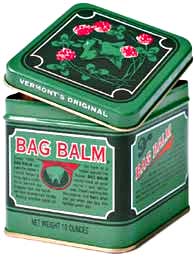David
Heiller
It’s
shaping up to be a strange Christmas. There’s no snow! That could change in the
next 15 days. But part of me thinks that this will be a brown Christmas.
I’m not complaining about the
weather. We deserve another winter off. But my brother-in-law, Randy, made a
good point on Sunday.
We were driving across the brown
landscape of suburban Minneapolis on a bleak Sunday afternoon. I was singing
the praises of the mild weather we’ve had so far.
But it
doesn’t feel like Christmas, he said, unless there is snow on the ground.
I thought about that, and I hate to
admit when my brother-in-law is right, but he is right. It doesn’t feel like
Christmas yet, and I think lack of snow is to blame. Partly.
Take the Christmas tree outing. Usually
when we cut a Christmas tree, we drag it home on a sled. Sometimes we’ve got
snowshoes on our feet, the snow is so deep.
This year, late last Saturday afternoon,
I put on a light jacket, hopped on the tractor with the trailer behind, and
drove to the woods.
I parked on high ground near a bog.
It was getting dark, and I’ve been known to get lost in the woods, so I brought
a flashlight along. I walked about 50 yards to the edge of the swamp, took the
light out of my pocket and hung it from a tree branch. It was 4:30 p.m., and already
getting dark. Don’t you just love Minnesota?
Then I waded through swamp grass and
six inches of water for a quarter mile. Every so often Ι glanced
back to make sure the light was shining. It was. Is there anything more reassuring
than a tiny speck of light on a dark walk in the woods?
I came to a tree that I had spotted
earlier in the day, when I had gone on a Christmas tree scouting expedition. It
hadn’t moved an inch, although it might have wished it could pick up its roots
and run.
I sawed down the tree with my
ceremonial Christmas tree saw that is used only once a year. I sloshed back to
the friendly light in the tree, then on the trailer and tractor. Then I drove
home.
Our home is slowly putting on its holiday clothes. The boxes—and there are many—have been taken out of the closet in
our daughter’s room. My wife, Cindy, has emptied their contents onto the dining
room table, and is finding a home for everything.
Now there’s a knick-knack in every
nook. Stars made of twigs hang from a beam. Α Dickens
Village lies on the living room chest. Lights snake along the wainscoting in
the kitchen.
It’s amazing how nice the house looks
when Cindy is done, although there is chaos leading up to that point. Cindy
learned the art of Christmas from her mother, Lorely Olson, whom we called,
with very little animosity, the Queen of Christmas.
 |
| Lorely and Noah, Christmas 1991. She was an inveterate giver. |
Lorely could overwhelm me on
Christmas. Ι felt sometimes that she gave too much to the kids. It’s
funny that they never complained. Looking back, I’m ashamed of my petty gripes.
She was a generous woman, and Christmas is a season of generosity. She lived up
to it and then some.
Several times on Saturday Cindy cried
as she looked at some new item from a Christmas box. Her mom gave us many of
the decorations.
Lorely died from cancer at age 64
just five weeks ago. We are thinking of her a lot these days. My thoughts are
tinted with sadness at her dying so young, and with happiness at remembering
how much Christmas and giving meant to her.
That’s what’s missing this Christmas.
Lorely and snow. Their absence is keeping the holiday at bay for me.
But I’ve got a hunch that that will
change, as the house lights up and gifts pile up under the tree, as cookies get
baked and company comes, as familiar memories are recalled and familiar hymns
are sung. Α happy Christmas will come once more.
As will
the snow. Not too much though, please.







